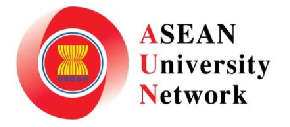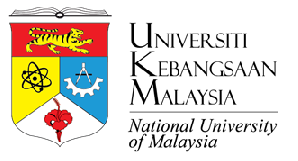
Abstract
This article discusses the development of a prototype spray pipe evaporator and its efficiency in producing salt in Indonesia. Due to the length of the salt harvesting season in Indonesia, many salt farmers have closed their business doors, leaving many salt ponds abandoned. The spray pipe evaporator prototype was designed to produce a brine solution with a salinity of 23–24 Be from seawater, which has a salinity of 2.5–3.5 Be, in less than 3 days. This is faster than the conventional process of a brine solution salinity of 24 Be. The prototype spray pipe evaporator was assessed in a 20 x 60 m evaporation pool with a depth of 18 cm that contained brine solution with a salinity of 15.5 Be. The number of sprays installed was 11. The salinity increased from 15.5 Be to 20.5 Be after 8.5 hr of evaporation. Meanwhile, with conventional evaporation, the salinity of the brine solution reaches 16.5 Be after 3 days of evaporation. Based on calculations of the evaporation capacity for 11 sprays, it was determined that each spray can evaporate 7.6 m3 of water. A spray pipe evaporator is thus more recommended for evaporation of seawater with a salinity of around 3–5 Be. The ratio of evaporation ponds using spray to evaporation ponds without spray is around 1:15. The technical development conducted in this study improved the evaporation process through spraying, which is applicable for salt pond farming and the salt industry. This technology arguably saves energy for pumps and reduces the number of workers, thus benefitting the salt farmers’ communities in tropical contexts, such as Indonesia.
References
Alrowais, R., Qian, C., Burhan, M., Ybyraiymkul, D., Shahzad, M. W., & Choon Ng, K. (2020). A greener seawater desalination method by direct-contact spray evaporation and condensation (DCSEC): Experiments. Applied Thermal Engineering, 179, Article 115629. https://doi.org/10.1016/j.applthermaleng.2020.115629
Amin, A. A., Yanuar, A. T., Kurniaty, R., Hakim, L., Ardian, G., Amenan, M., & Kurniawan, A. (2023). Greenhouse Salt Tunnel as innovation to create salt production in the South Coast Malang Regency, Indonesia. Jurnal Pembangunan dan Alam Lestari, 14(1), 14–21. https://doi.org/10.21776/ub.jpal.2023.014.01.03
Amirkalaei, M. H., Khoshgard, A., Ahmadi-Danesh-Ashtiani, H., & Fazaeli, R. (2020). Evaporation rate of sprayed seawater droplets in upward and downward direction and analyzing the effect of the injection pressure and nozzle type in solar water desalination systems. Energy Sources, Part A: Recovery, Utilization and Environmental Effects, 1–14. https://doi.org/10.1080/15567036.2020.1850929
Aris, T., Mamahit, D. A., & Ras, A. R. (2022). Indonesian salt import policy as a threat and opportunity in the concept of blue economy in Indonesia. Jurnal Pamator: Jurnal Ilmiah Universitas Trunojoyo, 15(1), 1–13. https://doi.org/10.21107/pamator.v15i1.14239
Chu, C.-R., Li, M.-H., Chen, Y.-Y., & Kuo, Y.-H. (2010). A wind tunnel experiment on the evaporation rate of Class A evaporation pan. Journal of Hydrology, 381(3–4), 221–224. https://doi.org/10.1016/j.jhydrol.2009.11.044
El-Agouz, S. A., Abd El-Aziz, G. B., & Awad, A. M. (2014). Solar desalination system using spray evaporation. Energy, 76(1), 276–283. https://doi.org/10.1016/j.energy.2014.08.009
Exner, K., Lindow, K., Buchholz, C., & Stark, R. (2014). Validation of product-service systems—A prototyping approach. Procedia CIRP, 16, 68–73. https://doi.org/10.1016/j.procir.2014.03.004
Kurniawan, A., Imam Syafi’i, M., Ardian, G., Jaziri, A. A., Amin, A. A., Budiyanto, B., Amenan, M., Salamah, L. N., & Setiawan, W. B. (2019). Continuously Dynamic Mixing (CDM) method and Greenhouse Salt Tunnel (GST) technology for sea salt production throughout the year. Jurnal Ilmiah Perikanan dan Kelautan, 11(2), 82–91. https://doi.org/10.20473/jipk.v11i2.13480
Liu, G., Chen, T., Xu, J., Yao, G., Xie, J., Cheng, Y., Miao, Z., & Wang, K. (2021). Salt-rejecting solar interfacial evaporation. Cell Reports Physical Science, 2(1), Article 100310. https://doi.org/10.1016/j.xcrp.2020.100310
Lukum, A., Mohamad, E., Tangahu, A. D. K., & Ohi, Y. S. (2021). Production and optimization of sea salt quality on the coast of Tomini Bay. Journal of Physics: Conference Series, 1–7, Article 1968. https://doi.org/10.1088/1742-6596/1968/1/012013
Mahasin, M. Z., Rochwulaningsih, Y., & Sulistiyono, S.T. (2020). Coastal ecosystem as salt production centre in Indonesia. E3S Web of Conferences, 202, 1–6. https://doi.org/10.1051/e3sconf/202020207042
Muljani, S., Sumada., K., & Pujiastuti, C. (2021). Transformasi teknologi produksi garam [Salt production technology transformation]. Jakad Media Publishing.
Muljani, S., Sumada, K., & Pujiastuti, C. (2022). Solar evaporation system using spray pipe method. MATEC Web of Conferences, 372, Article 09003. https://doi.org/10.1051/matecconf/202237209003
Muntalim, M., Purnamasari, I., Prihatini, E. S., & Rosyidah, N. K. (2020). Salt business development strategy using salt prisma house method in Sedayulawas Village Brondong Lamongan. Jurnal Grouper, 11, 1–9. http://doi.org/10.30736/grouper.v11i1.68
Pambudi, N. A., Yusafiadi, J., Biddinika, M. K., Estriyanto, Y., & Sarifudin, A. (2022). An experimental investigation of salt production improvement by spraying and heating. Case Studies in Thermal Engineering, 30, Article 101739. https://doi.org/10.1016/j.csite.2021.101739
Pang, Y., Zhang, J., Ma, R., Qu, Z., Lee, E., & Luo, T. (2020). Solar–thermal water evaporation: A review. ACS Energy Letters, 5(2), 437–456. https://doi.org/10.1021/acsenergylett.9b02611
Pujiastuti, C., Ngatilah, C., Sumada, K., & Muljani, S. (2017). A chemical effectivity study on removal of Ions Seawater Mg2+, K+, Ca2+ and SO2−4. Advanced Science Letters, 23(12), 12252–12255. https://doi.org/10.1166/asl.2017.10614
Shi, Y., Zhang, C., Li, R., Zhuo, S., Jin, Y., Shi, L., Hong, S., Chang, J., Ong, C., & Wang, P. (2018). Solar evaporator with controlled salt precipitation for zero liquid discharge desalination. Environmental Science & Technology, 52(20), 11822–11830. https://doi.org/10.1021/acs.est.8b03300
Tao, P., Ni, G., Song, C., Wu, J., Zhu, J., Chen, G., & Deng, T. (2018). Solar-driven interfacial evaporation. Nature Energy, 3, 1031–1041. https://doi.org/10.1038/s41560-018-0260-7
Tebay, V. (2023). Indonesian policy choices on salt. Formosa Journal of Applied Sciences, 2(7), 1601–1610. https://doi.org/10.55927/fjas.v2i7.5005
Wu, L., Dong, Z., Cai, Z., Ganapathy, T., Fang, N. X., Li, C., Yu, C., Zhang, Y., & Song, Y. (2020). Highly efficient three-dimensional solar evaporator for high salinity desalination by localized crystallization. Nature Communications, 11, Article 521. https://doi.org/10.1038/s41467-020-14366-1
Zhang, L., Li, X., Zhong, Y., Leroy, A., Xu, Z., Zhao, L., & Wang, E. N. (2022). Highly efficient and salt rejecting solar evaporation via a wick-free confined water layer. Nature Communications, 13, Article 849. https://doi.org/10.1038/s41467-022-28457-8
Zhao, F., Guo, Y., Zhou, X., Shi, W., & Yu, G. (2020). Materials for solar-powered water evaporation. Nature Reviews Materials, 5, 388–401. https://doi.org/10.1038/s41578-020-0182-4
Zhen, Y., Li, S., Chen, Y., Zhang, X., Chu, J., Zhang, Y., & Tan, S. C. (2022). Intensifying the co-production of vapor and salts by a one-way brine-flowing structure driven by solar irradiation or waste heat. Desalination, 539, Article 115942. https://doi.org/10.1016/j.desal.2022.115942
Zhou, X., Zhao, F., Guo, Y., Zhang, Y., &, Yu, G. (2018). A hydrogel-based antifouling solar evaporator for highly efficient water desalination. Energy & Environmental Science, 11(8), 1985–1992. https://doi.org/10.1039/c8ee00567b
Recommended Citation
Muljani, Srie; Sumada, Ketut; Pradana, Alfian Rizki; and Pujiastuti, Caecilia
(2024).
Development of a Spray Pipe Evaporator for Application on Unproductive Salt Farm Land in Indonesia.
ASEAN Journal of Community Engagement, 8(2), 201-216.
Available at: https://doi.org/10.7454/ajce.v8i2.1298







